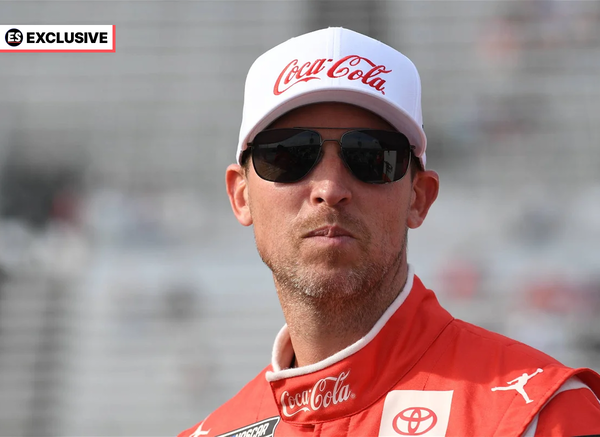

When NASCAR decided to reduce horsepower levels, it heavily ignited debates among fans and drivers. The once powerful 900-hp engines were reduced to 750 in 2015, then 550 in 2019, and up to 670 in 2022 with the introduction of the Next-Gen car. This specific move has raised concerns over its dampening effect on race excitement and competitiveness. NASCAR aimed to level the competitive field with this decision, but drivers including Denny Hamlin argued that it has done the opposite.
Experts claimed that it has stripped away the raw excitement that defines NASCAR, fueling ongoing debates about the strategic change’s adverse effects. Now, a famous NASCAR insider has come in support of the power revival.
ADVERTISEMENT
Article continues below this ad
How has power snatched thrills from races?
Kyle Petty opened up in a recent interview with GoPRNLive and discussed a lot of important factors in racing. When the interviewer asked what was causing the yellow flags in the most recent races, Petty sounded like Denny Hamlin. He said, “It’s just the nature of where we’re at. And you can’t; there is no tweak for this. You have to understand that speedway racing, Charlotte, a mile and a half, and a mile racetrack is a different form of racing than what short track racing is.”
Emphasizing the difference in tracks and the kind of racing it leads to, he added, “Short track is an animal one to itself. Just like Daytona and what we do there is an animal into itself. Aero comes into both places. There you’re always going to get there. But it’s always been in motorsports, that the smaller the track, the more mechanical grip and the more the mechanics of the car came in.”
Mentioning the specificity of short tracks, and the kind of cautions and restarts, Kyle Petty said, “And the less Aero, it just shifted. It’s like a needle, it just goes from one side to the other. And it becomes more predominantly a chassis-style racetrack… You have to run them like a late model series, where momentum is the main thing. That’s why the tracks like Bristol, the tracks that we see a lot of times, the groove has moved up to the top of the racetrack. Because you got to keep the car wound up, that’s why people run up next to the wall. Uh, if we had an open rule where you would go back and choose a gear, then some teams would choose to run on the bottom.”
Petty stated that drivers from before around 1995 would also agree that cars nowadays require more power. He specifies around 850–900 horsepower to enable tire spinning at the corners, enabling modulation of the throttle. Thus, it would be a more competitive and elevated driving experience. He further suggested that the need for shifting gears should be eliminated to enhance a single-gear system without the need for shifting.
Denny Hamlin’s voice receives silent treatment every time
Denny Hamlin’s firm support for more horsepower in NASCAR has ignited considerable debate. He stated that a minor tweak could significantly improve racing on these short tracks. Like always, this appeal has gone unanswered. Recently, before the Phoenix race, Hamlin highlighted the ease and low cost of adding more horsepower.
Being a team owner himself, he understands that these changes do nothing good for the cars and the races. Additionally, according to Hamlin, it does not even contribute to cost savings, as NASCAR previously promised. He said, “Everything but horsepower. They just refuse; they will not do it. I can tell as a team owner, our engine bills when they were 700 or 800 horsepower versus right now is no different. So I don’t understand why going back and taking a 50-cent piece of aluminum, that is a tapered spacer, and opening that thing back to 750. I can’t make sense of why we’re not doing it.”
ADVERTISEMENT
Article continues below this ad
ADVERTISEMENT
Article continues below this ad
ADVERTISEMENT
ADVERTISEMENT
ADVERTISEMENT
ADVERTISEMENT

